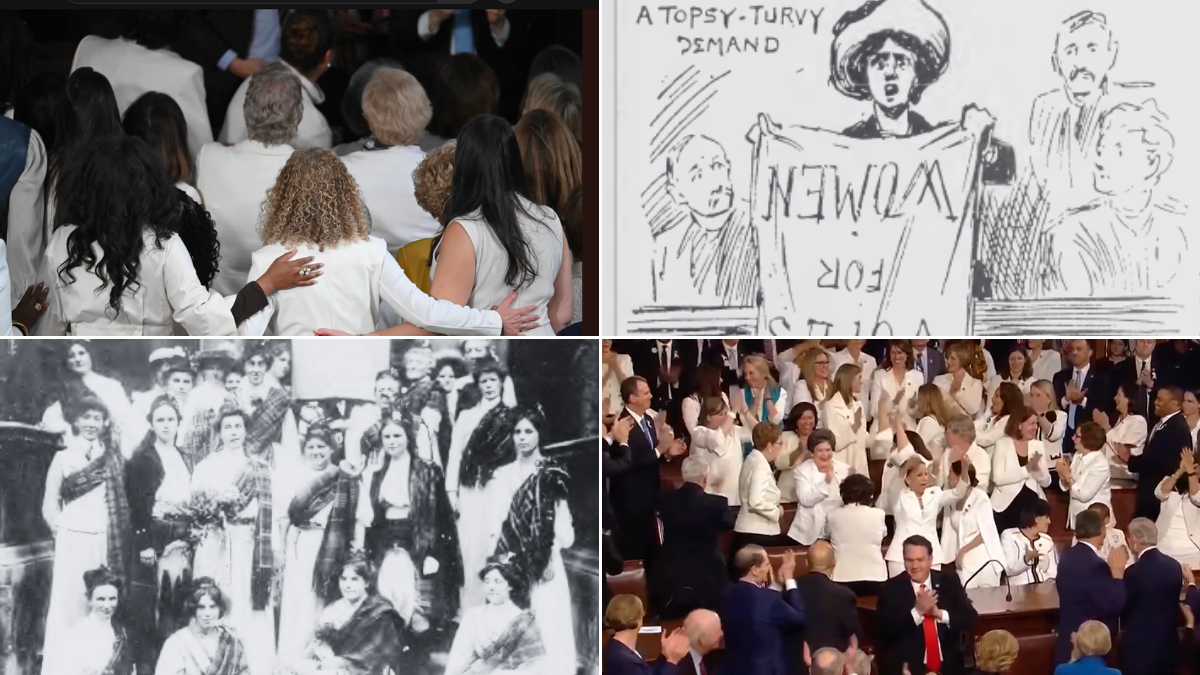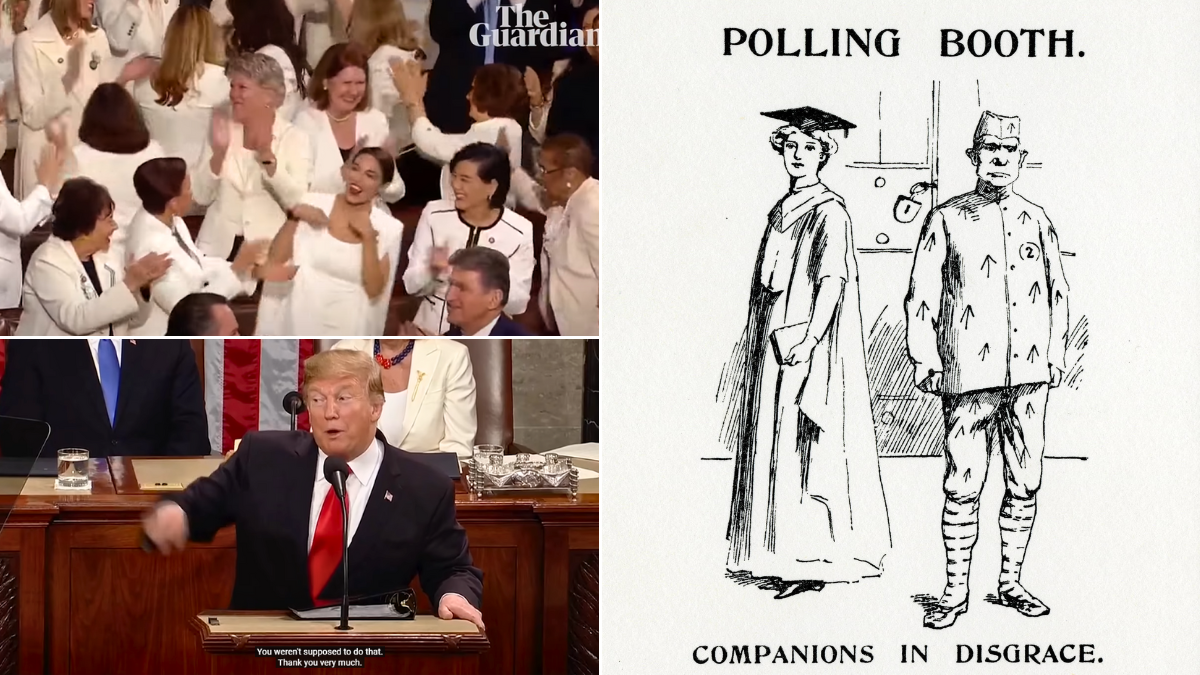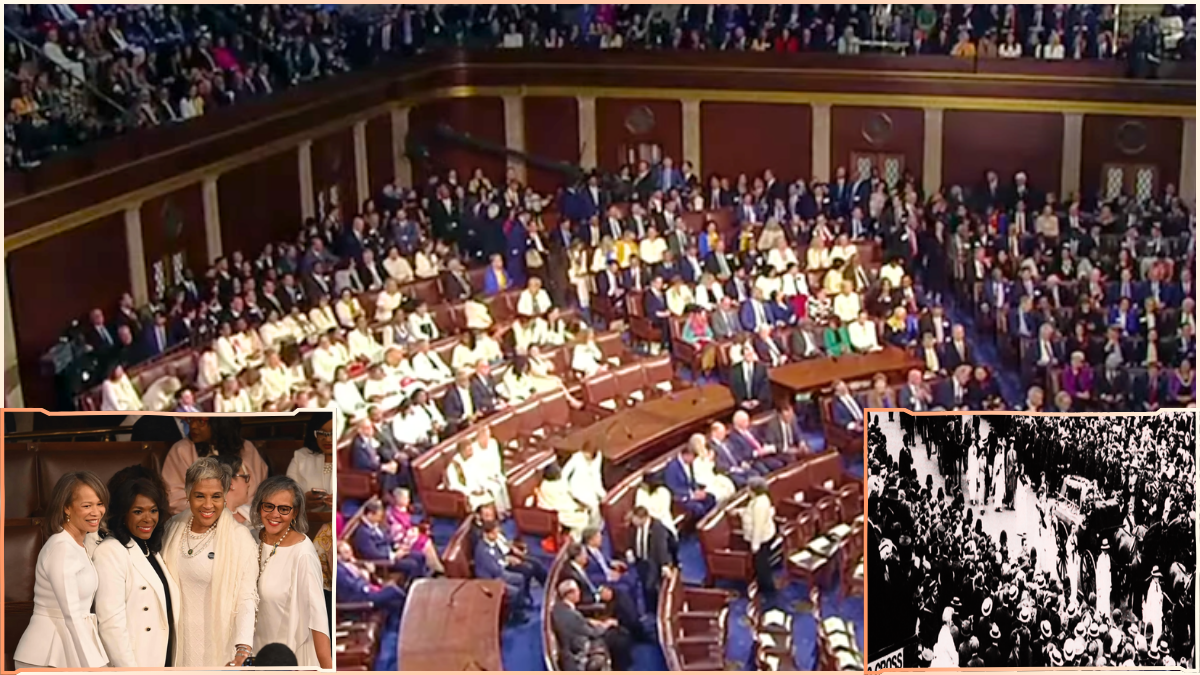Late-night TV host Steven Colbert described this most recent State of the Union address room, saying “On the Democratic side, they wore white. On the Republican side, they were white.”
But while many must’ve understood the attire choice as a form of protest – they would be right to reckon so – the majority of viewers likely did not make the historical connection with the movement the Democratic ladies were alluding to by wearing all white. Among them were Nancy Pelosi, Katherine Clark, Alexandria Ocasio Cortez, and countless more – even a few men amongst them in solidarity. All to protest in favor of women’s rights, like past gentleladies before them during the late 19th century and early 20th century.
The Historical Roots: Suffragists and the National Women’s Party

Over a century ago, Grace Richardson wrote: “Being a Suffragist was never easy – early days or late.” This axiom still seems to ring true. Otherwise, why would the congresswomen of the Democratic Party still need to revive the symbolic white as a statement to current times?
White was a staple color for women of the suffrage movement (both suffragists and suffragettes) to wear as a form of political statement and striking symbolism. Of course, as it does with the bride’s wedding dress, it signifies purity and virtue, but it was also a way to stand out in the crowd as well as reclaim the symbolism that was mostly forced upon, not embraced by, women for most of History.
“Twelve girls in white, each holding a yellow and white umbrella with the name of a Suffrage State, sat high inside an enclosure and another girl with ‘Nebraska next?’ on her umbrella stood at the closed gate.” (Grace Crandall Richardson, My part in the struggle for equal rights for women, 1911-1920)
The color became particularly associated with Alice Paul (1885-1977) and her National Woman’s Party, who played a significant role in the passing into law of the 19th Amendment – the equal right to vote.
When did the Democrats’ fashion statement begin?

Another woman from the movement, Mrs. A. J. George began her Women’s Rights vs Women’s Suffrage (circa 1912) by stating “Votes are far from being the whole story of this dispute.” And it is precisely because history holds cyclical weight that bringing out the old symbolic white of the suffragists and suffragettes still makes sense in 2024. Especially taking into account how Roe V. Wade was overturned in 2022, and, in too many cases, reproductive rights seem to be slipping farther and farther out of American women’s hands. Meanwhile, on the other side of the Atlantic, France just passed the right to abortion into its constitution.
According to the New York Times, wearing all white for congresswomen from the Democratic left began in 2017 – not at the State of the Union address, as there wasn’t one that particular year. In 2018, they changed things up to honor the #Metoo movement and wore black instead. In 2019, many representatives donned all-white once more.
This year, the effort was more than visible as it was impossible to look at the crowd and not see the conspicuous sea of white occupying a significant portion of the room.
Although it was used as a form of silent and symbolic protest against the threat on women’s rights from the political right and the previous Trump Administration, there was a curious but strangely endearing moment when the same women who wore white celebrated Trump’s words about the statistical improvement of women’s condition on certain matters, as The Guardian video above shows. Former president Donald Trump himself seemed pleasantly surprised by the reaction.
Our political differences aside – or precisely because differences were put aside – the brief moment should inspire us all to find ways and actively search for reasons to chant “USA! USA!” in a single voice, rather than further impel the American people towards a national divorce, like some individuals are intent on.

